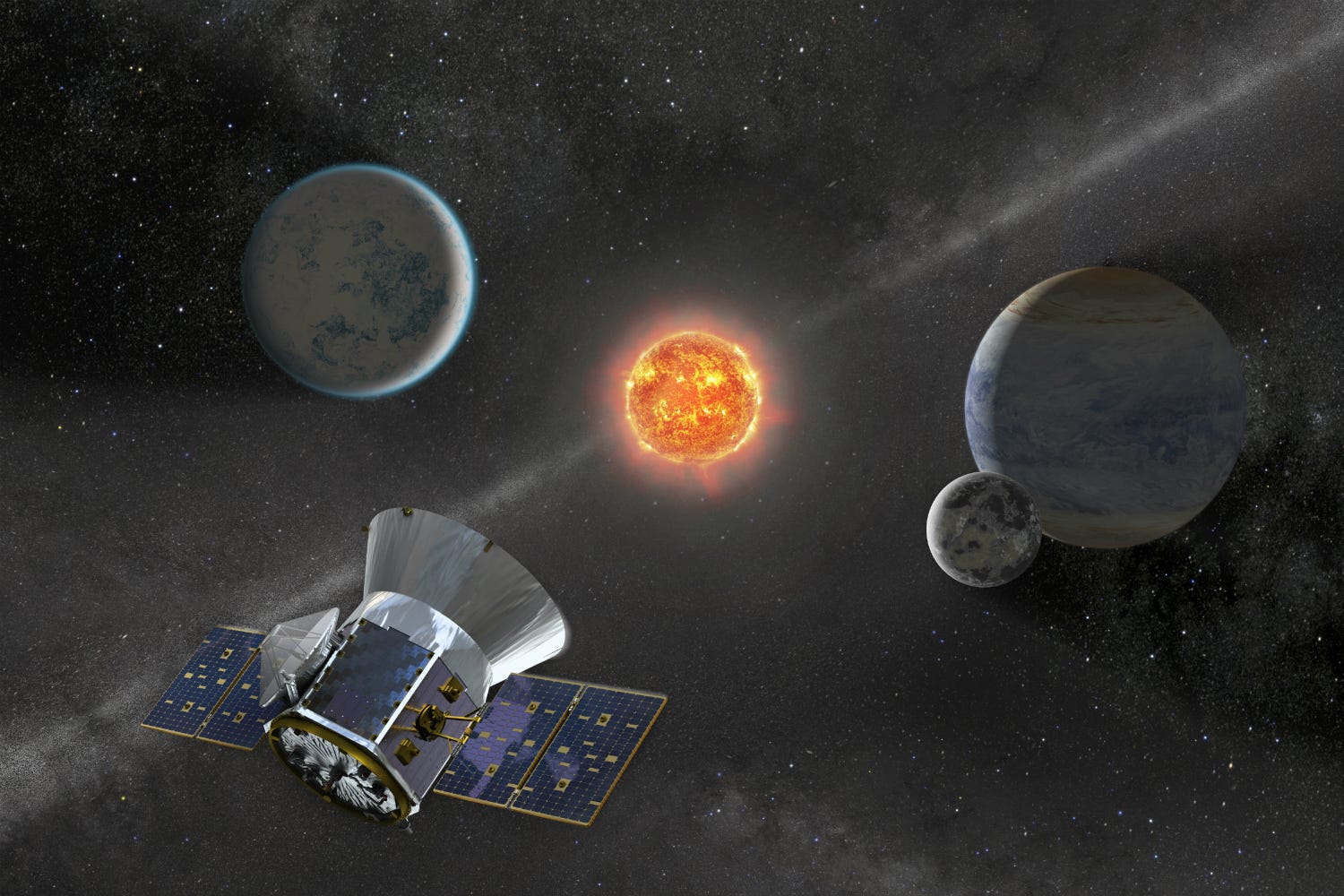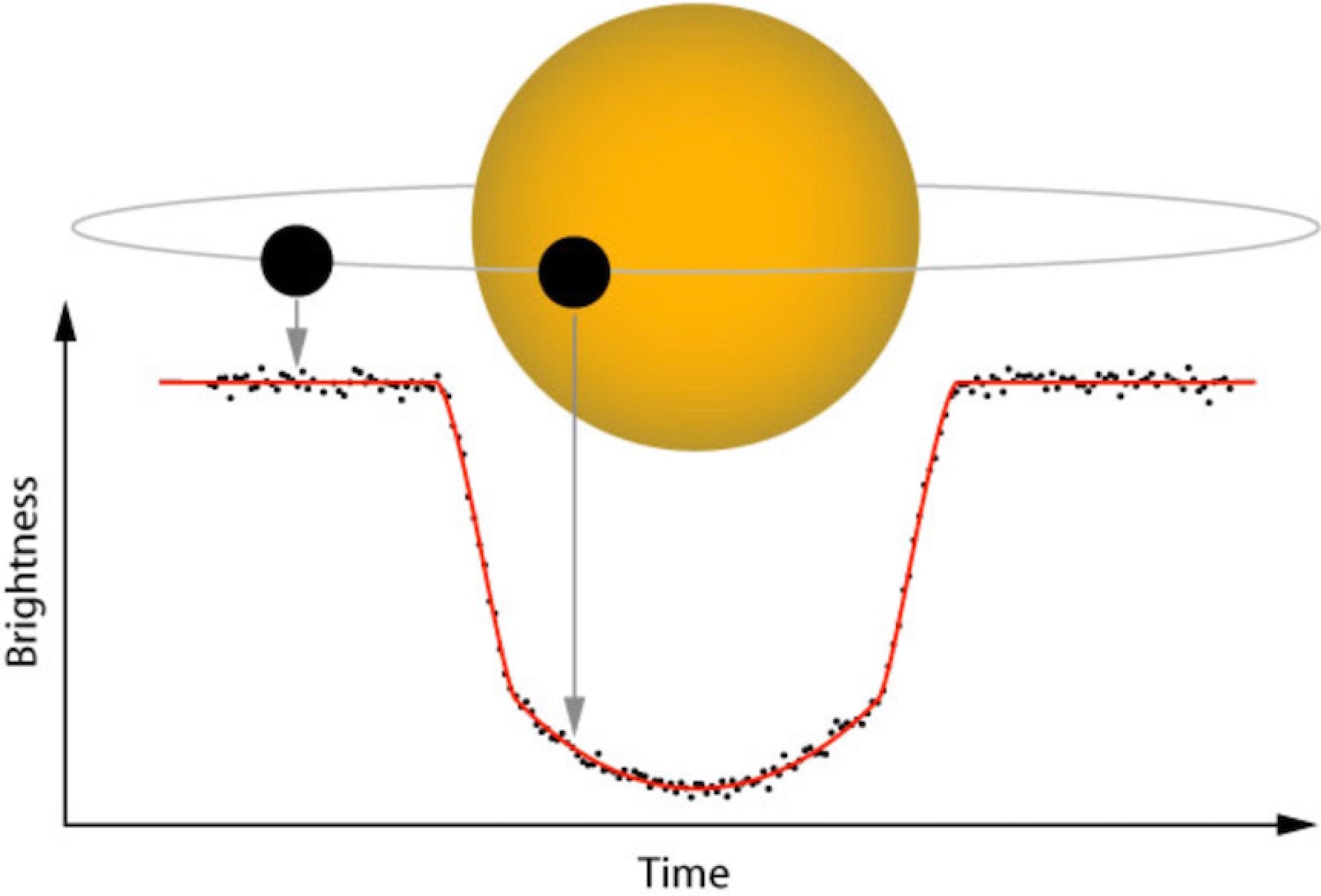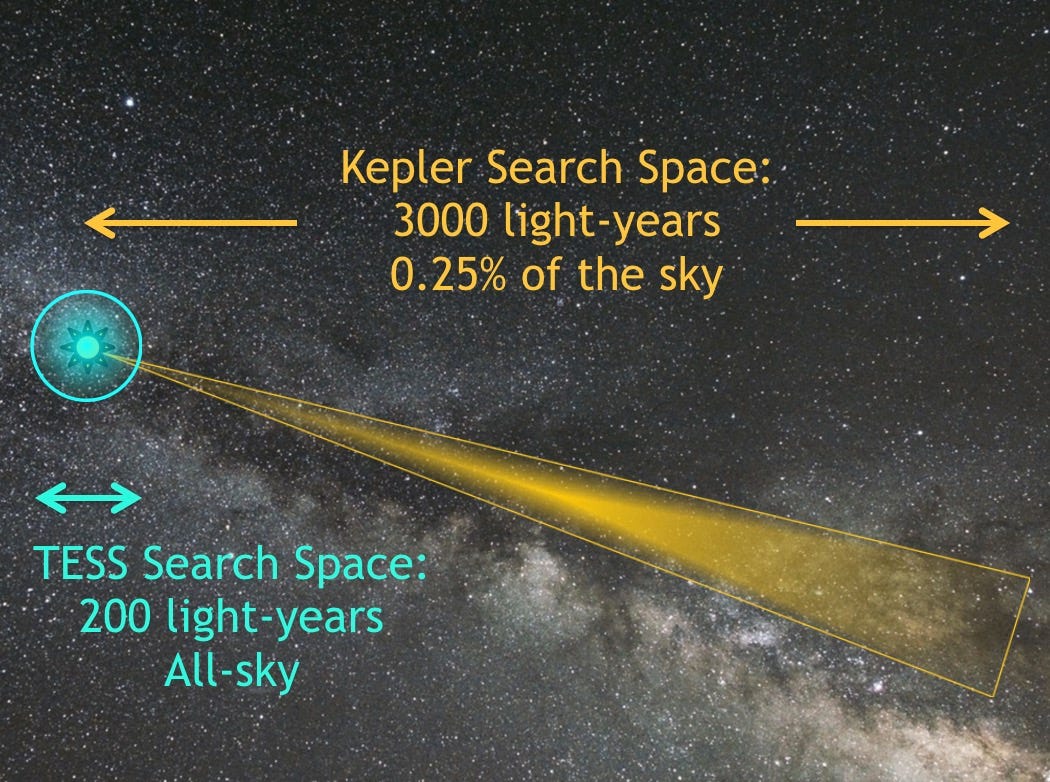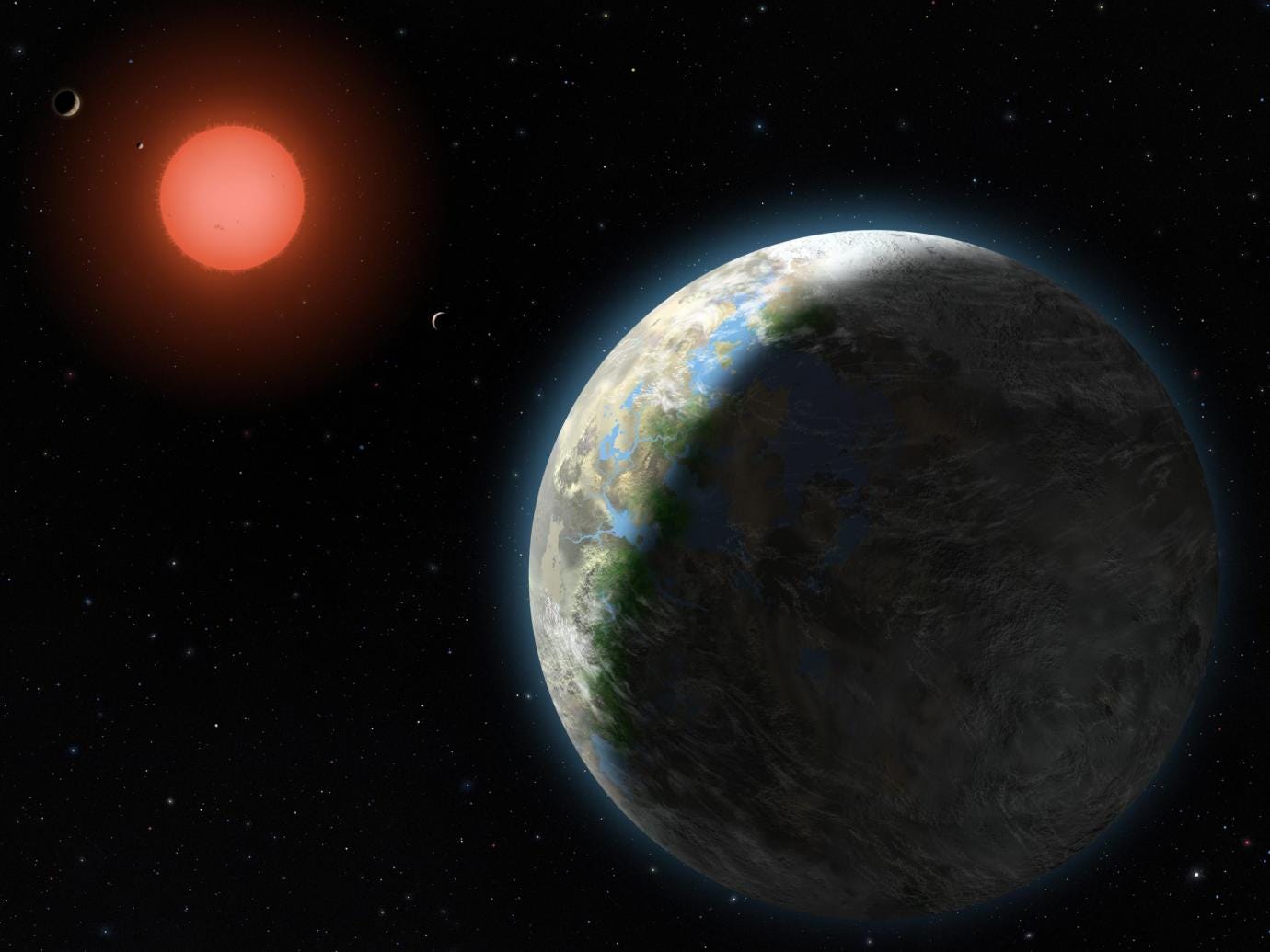TESS is finding Earth-like planets around the galaxy's most common stars
NASA’s planet-finding telescope is charting Earth-like worlds around nearby stars, especially red dwarfs, for future telescopes to assess their potential for life.
As of 2021, we have discovered more than 4,500 planets orbiting other stars in our galaxy. More than half of these exoplanets were spotted by NASA’s first planet-hunting space telescope called Kepler launched in 2009. While most planets Kepler found are larger and far more massive than Earth, it demonstrated how such a dedicated mission can greatly refine our search for life.
As a follow-up, NASA, MIT and several institutes launched the Transiting Exoplanet Survey Satellite (TESS) in 2018. TESS has a more focused mission: to spot Earth-size worlds around some of the nearest and brightest stars so they can be comprehensively studied by future telescopes.

How does TESS find planets around other stars and what is its search space?
TESS detects exoplanets the same way Kepler did—by looking for periodic dips in the brightness of stars as planets cross in front of them along our line of sight. The larger the planet, the further the drop in brightness during the transit. How long it takes a planet to pass in front of the star and come back tells us the shape of its orbit.

Kepler primarily observed faraway stars in a single skypatch. TESS, on the other hand, will cover an area that’s about 400 times larger: roughly 85% of the entire sky. To do that, TESS circles Earth in a unique high Earth orbit of 12 to 15 days, which is inclined in a way that the telescope’s skyview is largely free from obstructions by our bright planet and the Moon.

Over the course of its two-year primary mission, TESS’ four sensitive cameras systematically scanned over 200,000 of the nearest and brightest stars, imaging 75% of the sky. It found 2,100 planetary candidates and 66 confirmed exoplanets. The candidates are observed again using a network of dozens of ground-based telescopes to confirm if they’re indeed planets.
While TESS data tells us the size and orbits of these planets, ground telescopes can tell us their masses. Knowing all three of these parameters reveals if the planet must be rocky like Earth, gaseous like Jupiter and Saturn, or something else entirely. Many TESS-discovered planets will also be observed again by future missions such as NASA’s recently launched JWST, which will allow scientists to study exoplanets’ atmospheres in unprecedented detail.
In the two-year extended mission that started from July 2020, TESS increased its imaging cadence to better find Earth-like habitable worlds around stars called red dwarfs, the most common type in our galaxy. These stars are of great interest to find life around because their lower masses and gravities, and thus slow fuel burn, ensure they will outlast Sun-like stars by a trillion years or more.
What are some of the planets TESS has discovered?
Even though TESS is specifically designed to find relatively smaller exoplanets than Kepler, it has still managed to find a variety of strange worlds. TESS has discovered a few ultrahot planets that orbit their stars in less than a day or two, ‘Super Earths’ up to five times more massive than our planet, newly born planets, a Neptune-sized world orbiting two stars, and even stars with multiple planets.
The most notable TESS-aided discovery though is an Earth-sized planet in the habitable zone around its red dwarf star, where conditions could be just right for surface water to exist. This planet, called TOI 700 d, is only 20% larger than Earth and receives 86% as much energy. Future telescopes will peer into its atmosphere to determine if it’s really habitable.

Not just a planet-hunter but stellar informer too
The sensitivity required to register very faint dips in brightness caused by transiting planets also makes TESS a stellar observer. Scientists have been analyzing its data to better understand the nature of stars themselves. To pick just a few examples, TESS gave astronomers a unique look at a star that’s about to explode, helped identify previously elusive patterns in pulsating stars, watched a star being torn apart by a black hole, and even found a six-star system composed of three pairs of binary stars.
Shedding light on planets around red dwarfs
The fact that TESS is scanning broad swaths of the sky and recording brightness variations of all nearby stars within makes it extremely useful to assess how the habitability of planets around red dwarf stars is affected by flaring, wherein those stars unleash waves of ultraviolet and X-ray radiation harmful to life as we know it. And they do so more frequently than our Sun. If our star can strip off Mars’ water and dense atmosphere from a huge distance, habitable zone planets around furiously flaring red dwarfs lying about 30 times closer could lose their atmospheres in just a hundred million years. The intense radiation could prevent life from even arising on such planets. However, initial TESS observations have provided some hope.
One TESS study found that unlike generally assumed, the most intense flares from four red dwarf stars appeared closer to their poles, steering clear of the equatorial plane in which most planets usually orbit. The sample size is small but if further observations support it, it’s good news for possible life on red dwarf planets. Another TESS study analyzed 2532 flares from 112 red dwarfs and showed that the flares, while stronger than our Sun, weren’t energetic enough to trigger depletion of an Earth-like protective ozone layer on red dwarf planets.
With over 600 peer-reviewed research results and discoveries published and counting, TESS is helping us refine our search for another Earth like never before.
How can you help find another Earth?
If you are the kind who likes to dive into raw telescopic data of the stars, TESS data is publicly available to use for free. Even if you’re not a researcher, you can still help by participating in TESS’ Citizen Science project, which has already helped discover several exoplanets including a world orbiting two stars, like Tatooine in Star Wars.
Originally published at The Planetary Society.
Like what you read? Support me to keep me going.
